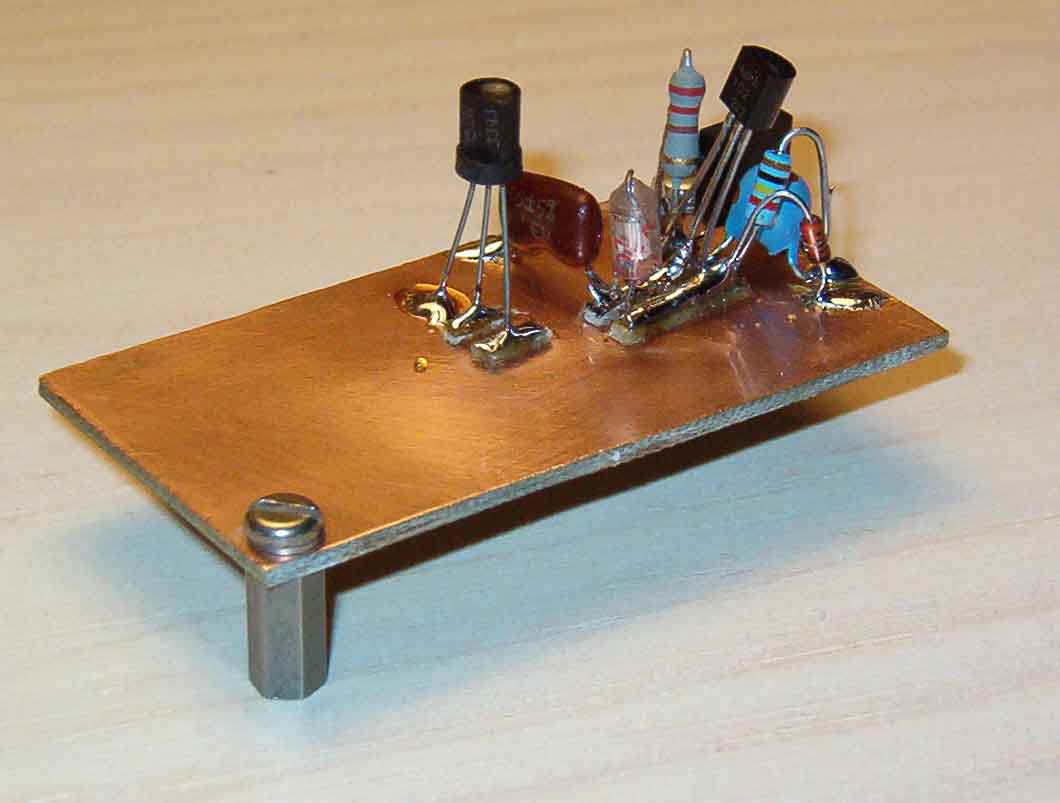| The
Tribulations of a SPICE Simulation As the circuit for the BFO
evolved, it was decided to perform a SPICE simulation to see how the oscillator
might behave, prior to melting any solder.
The simulation was
attempted by capturing the schematic using National Instruments's Multi-Sim
program
v6.11 PowerPro for Windows. Click here to view the schematic for the BFO as
captured in Multi-Sim.
Interestingly,
regardless of what Multi-Sim piezo crystal model was
selected for the oscillator's crystal, none of the
Multi-Sim simulations would "oscillate."
Apparently, the
simulated oscillator was too perfect; there were
no imbalances to get oscillation started! In a real world
oscillator, transistor and component noise, as well as
power supply variations during initial power-up, are
generally sufficient to get oscillation under way. It's
akin to pushing a pendulum for the first time on a
grandfather clock. In this case, the power supply
"spring" was wound, but the circuit needed a
"pendulum push."
After consulting
with K8CN, Mike (a teacher who uses Multi-Sim in his
classroom), it was decided to tack a crude virtual 12-V
momentary switch to the crystal. You can see this
pushbutton in the upper left-hand corner of the SPICE
drawing.
Lo and behold---one
push of the spacebar "button" and the circuit
broke into virtual oscillation.
Depending on the CAE
program's virtual oscilloscope settings, the initial
start-up swings were even visible, and you could see the
circuit settle into a steady oscillation state. Here's
the image of the simulated oscillator's output waveform during normal
operation.
Click
here for a short
article in "Planet Analog"
that I wrote about this adventure, as well as an
additional interesting screen capture.
Click to continue to see the BFO hardware.
Use your Browser's
BACK button to go back.
Click here to return to home page.
|
